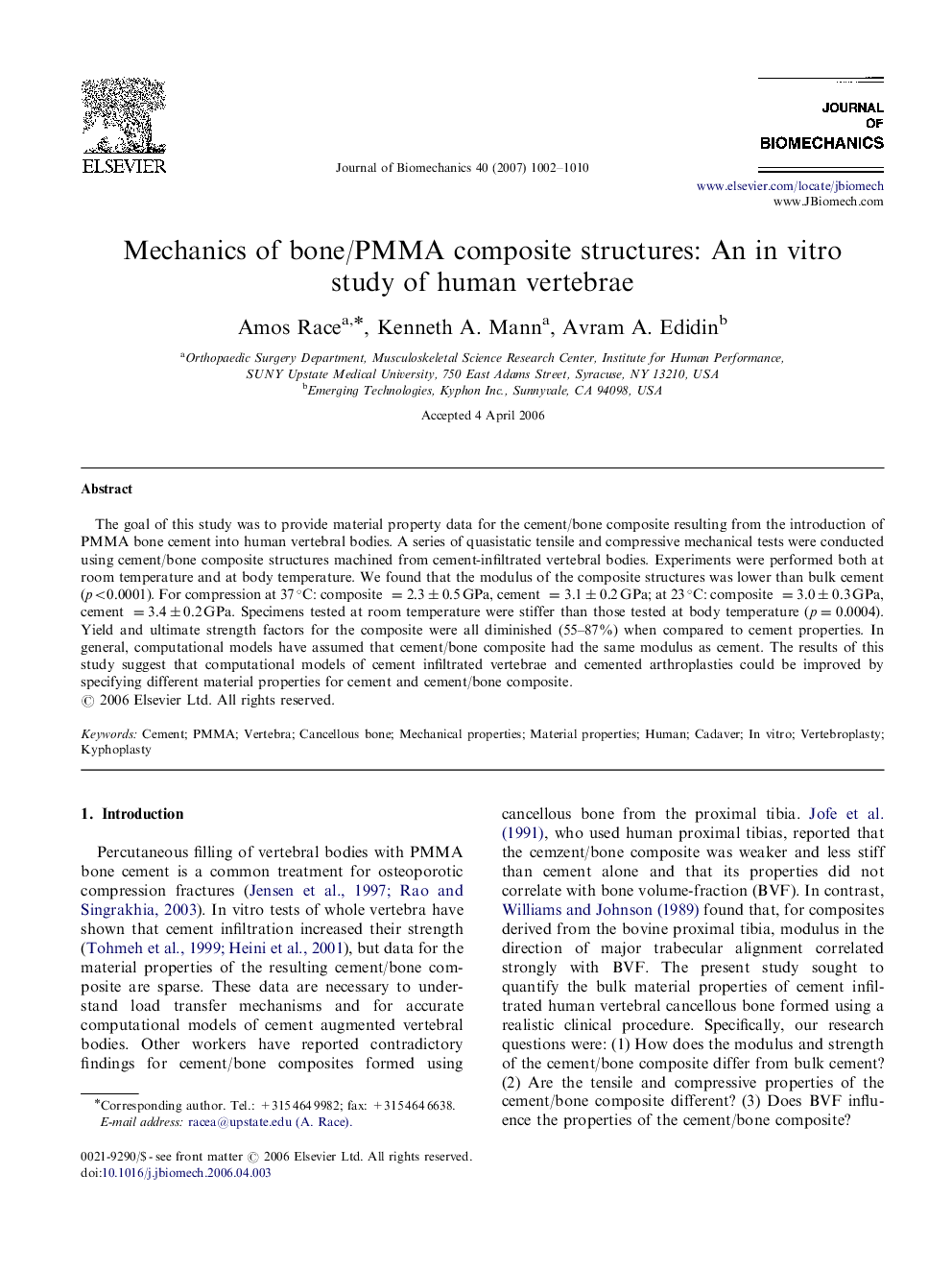| Article ID | Journal | Published Year | Pages | File Type |
|---|---|---|---|---|
| 875331 | Journal of Biomechanics | 2007 | 9 Pages |
The goal of this study was to provide material property data for the cement/bone composite resulting from the introduction of PMMA bone cement into human vertebral bodies. A series of quasistatic tensile and compressive mechanical tests were conducted using cement/bone composite structures machined from cement-infiltrated vertebral bodies. Experiments were performed both at room temperature and at body temperature. We found that the modulus of the composite structures was lower than bulk cement (p<0.0001p<0.0001). For compression at 37∘C: composite =2.3±0.5GPa, cement =3.1±0.2GPa; at 23∘C: composite =3.0±0.3GPa, cement =3.4±0.2GPa. Specimens tested at room temperature were stiffer than those tested at body temperature (p=0.0004p=0.0004). Yield and ultimate strength factors for the composite were all diminished (55–87%) when compared to cement properties. In general, computational models have assumed that cement/bone composite had the same modulus as cement. The results of this study suggest that computational models of cement infiltrated vertebrae and cemented arthroplasties could be improved by specifying different material properties for cement and cement/bone composite.
